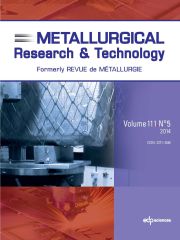No CrossRef data available.
Article contents
Abstract
India, which produced nearly 67 Mt steel in 2010, aims to produce, in the near future, more than 100 Mt/year and to become, after China, the second largest steelmaker worldwide. To do this, India benefits from large iron ore reserves, especially of high-grade hematites, which presently constitute the largest amount of the local consumption as well of the exports. For the future, however, it will be necessary to beneficiate the large reserves of lower-grade iron ores, especially the magnetites. Furthermore, the question of the amount of the Indian iron ores available for export will have to be considered. India also has very large coal resources but, unhappily, mainly in non-coking coal, and often with high ash content: this is the main problem of the Indian iron and steel industry, to select the best routes and processes to make steel. The Indian iron and steel industry has to choose between: the conventional route based on the Blast Furnace and Oxygen Converter, which implies increasing the imports of high-grade coking coal, mainly from Australia; various routes based on local Indian coals, such as: (a) COREX or FINEX processes to produce liquid hot metal, or (b) direct reduction processes, either based on natural gas where it is available, or on local coals, presently mainly in rotary kilns (but with serious problems of energy efficiency and environmental pollution, in spite of the large present development), or based on coal gasification processes (such as MXCOL or ITmk3 processes). Finally, another special feature of the Indian iron and steel companies, specially of the largest private ones such as Tata, Essar and JSW (Jindal), is their development outside of India, which means the control of some 18 Mt steel/year, aiming to reach about 25 Mt/year in the near future!
Keywords
- Type
- Research Article
- Information
- Copyright
- © EDP Sciences


